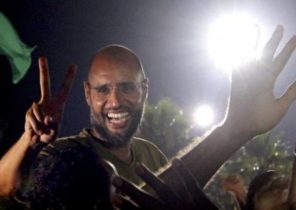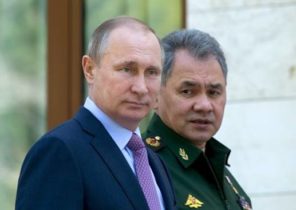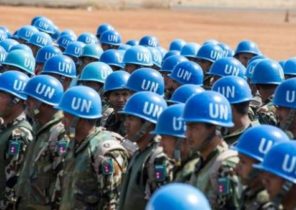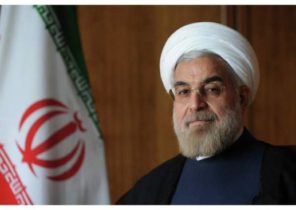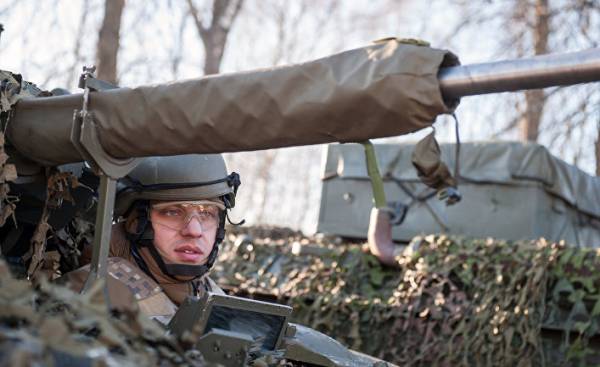
“The national guard is the cornerstone of the Latvian self-defense”, — such statement in August last year, speaking at the event dedicated to the 25th anniversary of the founding of the militia of Latvia, was made by the President of the Russian Federation. At the moment in the ranks of this voluntary education is registered about 8 thousand people, by 2020 it is planned to increase this figure to 12 thousand. However, other Baltic countries are not inclined to rely on the militia volunteers.
The new head of the National armed forces Leonid Kalnins in recent months, talks about the growing interest in the national guard. According to him, 2016 is in the militia joined nearly 900 new recruits. However, how many Latvians are leaving the ranks of Zemessardze, out of the question, although the statistics is driving a positive trend. On the situation on August 1, 2016, the militia has received 617 new members. 607 people were expelled or left. “Balance is extremely minimal, but still positive” — was forced one day to recognize Kalnins.
The situation may seem natural, because the national guard is a voluntary militia, not regular army. However, the plans to increase the number semisalov in three years for four thousand people on the background of the figures presented above raise some doubts. Moreover, it is clear that to compare Zemessardze with the regular army is not entirely correct. For example, your Kaitseliit Estonians and Lithuanians their Alliance gunmen to the army rank. In Latvia the situation is different.
The Latvian way: without a call, but with the militia
After the restoration of independence and accession to NATO Latvia had relied on the assurances that the Alliance gave its members. It is expected that participation in international missions means that in case of an attack on the country, the allies will give rebuff to the aggressor. As a result it was decided to create a very small, but very professional, with a high skill level army, which was largely “imprisoned” for missions in Iraq and Afghanistan. Latvian infantry do have a rather high individual level, but there are only about 5 thousand people. To repel large-scale aggression is not enough.
Other Baltic countries also can not boast of the size of its armies in Estonia, a little more than 5,000 troops in Lithuania — about 10 thousand. How to build capacity? Given the tense geopolitical situation, Lithuanians and Estonians made a bid for the full return of military conscription. Young people to take the time out of civilian life, Lodge in barracks, learn to maintain discipline, to endure the hardships of military life, to shoot, to run, to work as part of a combat unit. One of the main principles of the army: a man is in a 100% militarized environment, and for a long time intensively studying military Affairs from morning to night, seven days a week. As a result, “hammered” skills that last a lifetime.
Lithuania compulsory military service annually will be raised from 3.5 to 4 thousand people. This means that every year the country will receive at least 3 thousand 500 reservists in addition to the existing 10 thousand professional soldiers. In five years the state will receive about 17 thousand young people under the age of 27-28 years old, relatively healthy and owns some of the skills of warfare. After the service the citizen shall be credited to the soldiers of the reserve and if necessary the country could rasschitat.
Latvia from the call confidently refuses. When some time ago the discussion began about a possible return of conscription, the reaction of the Ministry of defense was extremely sharp. “The relevant question is who is interested to destroy a functioning system of defence of the state, which after years of reduced funding is restored and becomes a real force, and replace it with the soldiers of compulsory conscription or “cannon fodder”,” — said in a statement released by the defense Ministry.
Instead, Latvia intends to follow a different concept: the voluntary militia (Zemessardze) is included in the composition of the National armed forces (i.e., attached to a professional army). Thus the official size of the military reserve is automatically increased from 5 thousand to 13 thousand.
Who really may be “cannon fodder”?
The Ministry of defence was officially named the soldiers of compulsory conscription “cannon fodder”. The head of the NAF Leonid Kalnins and high-ranking officials of the defense Ministry praising the level of training of civil guards. “Readiness of the national guard, which trains regularly and participates in drills, eventually higher than would soldiers of compulsory conscription,” — said the parliamentary Secretary of the Ministry of defense Andrey Panteleev.
“We are compared to soldiers of the regular forces,” — said in June 2016 Leonid Kalnins, who at that time was the head of the Latvian militia. He was echoed by defense Minister Raimonds Bergmanis, emphasizing high opinion of foreign military zemessargu who participated in the European battle group (grupa SIA kaujas).
But it can be considered to compare the intensity of training themessages with the regular army? In a normal situation, the militia volunteers train on weekends. Not everyone can afford to pay this every weekend without exception. This means that over the three years of the exercise of temescal can “dial” in the area of 90 days of training, which amounts to 3 months of training. Basic course in professional infantryman of the army of Latvia is around 13 weeks — in fact, those same three months. However, it should be understood that this is only the first step in the new life of a soldier, and it cannot be considered achievement level, after which a person can be considered a full-fledged military. For comparison: currently in the Armed forces of Ukraine the course of the young fighter is 50 days. However, the country is actually in a state of war, and 50 days — the absolute minimum in order to at least learn something “civil”.
The result is that Lithuania will get a new batch of enough trained soldiers reserve, and Latvia will train fighters of the same level for three years. Besides, the question remains about the number — if the Lithuanians are planning to strengthen their hand 3-4 thousands of already trained recruits, in the case of the national guard numbers will be much more modest.
It should be noted that last summer the national guard began to actively promote the practice of so-called “summer camps”, where Latvians are offered to undergo intensive training for three weeks by the method of “from dawn to sunset.” However, it is difficult to say what the graduates of this camp can be better than conscripted soldiers (“cannon fodder” in the terminology of the Ministry of defense of Latvia), trained for a much longer time.
